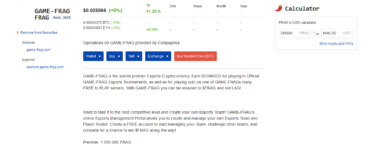Historical coins serve as tangible connections to the previous, providing glimpses into the civilizations, cultures, and historical occasions they as soon as circulated within. Nonetheless, the allure of historical coins also invites challenges, particularly in discerning between genuine artifacts and clever forgeries. Navigating the world of historic coin accumulating requires a keen eye for authenticity amidst a sea of reproductions. This article delves into the intricacies of forgery and authenticity in historic coin accumulating, offering insights into how collectors can safeguard themselves in this fascinating pursuit.
The allure of historical coins lies not only in their historical significance but also in their tangible connection to bygone eras. Each coin carries a story, reflecting the artistry, politics, and economics of the time in which it was minted. However, the market for historical coins is rife with forgeries, a reality that challenges each seasoned collectors and newcomers alike.
One of many primary challenges in historical coin collecting is distinguishing between genuine coins and skillful forgeries. Forgers usually employ sophisticated techniques to imitate the looks of authentic coins, making detection a daunting task. From replicating patinas to imitateking minting techniques, forgers spare no effort in creating convincing replicas that can deceive even skilled collectors.
To navigate this minefield of forgeries, collectors should arm themselves with knowledge. Understanding the nuances of coinage, together with minting processes, historical context, and typological variations, serves as a vital first step in authentication. Moreover, acquaintedity with the telltale signs of forgery, equivalent to anomalies in design, incorrect inscriptions, and inconsistencies in metal composition, will help collectors identify counterfeit coins.
Authentication in historical coin accumulating usually depends on a mix of visual examination, metallurgical analysis, and provenance research. Visual inspection involves scrutinizing the coin’s design, lettering, and overall look for discrepancies that may indicate forgery. Metallurgical evaluation, together with X-ray fluorescence (XRF) testing and spectroscopic examination, can reveal the composition of the coin’s metal, providing insights into its authenticity. Provenance research involves tracing the coin’s ownership history to ascertain its legitimacy and ensure it has not been related with illicit activities.
In addition to those traditional strategies, advancements in technology have revolutionized the authentication process. Techniques such as digital imaging, microphotography, and computational evaluation enable collectors to scrutinize coins with unprecedented precision, uncovering subtle details that may elude the naked eye. Furthermore, blockchain technology affords a promising resolution to the problem of provenance, providing clear and immutable records of a coin’s ownership history.
Despite these advancements, the battle towards forgery in historical coin amassing remains ongoing. As forgers adapt and refine their techniques, collectors must stay vigilant and continuously update their knowledge and expertise. Collaborative efforts within the numismatic community, together with the sharing of information and resources, play a crucial function in combating forgery and preserving the integrity of historic coin collecting.
While the specter of forgery may cast a shadow over the world of historic coin collecting, the pursuit of authenticity offers its own rewards. Real ancient coins function home windows into the past, offering invaluable insights into the civilizations, cultures, and individuals who formed history. Every authentic coin represents a tangible link to antiquity, a chunk of the puzzle that enriches our understanding of the past.
In conclusion, navigating the world of historical coin collecting requires diligence, experience, and a commitment to authenticity. By arming themselves with knowledge, leveraging technological advancements, and fostering collaboration within the numismatic community, collectors can safeguard themselves in opposition to the perils of forgery and preserve the integrity of this venerable pursuit. In the quest for authenticity, historical coin collectors embark on a journey by time, uncovering treasures that transcend mere monetary value and resonate with the echoes of history.
If you have any queries concerning wherever and how to use medallists, you can get hold of us at our web-page.

 by russellpulver6
by russellpulver6





